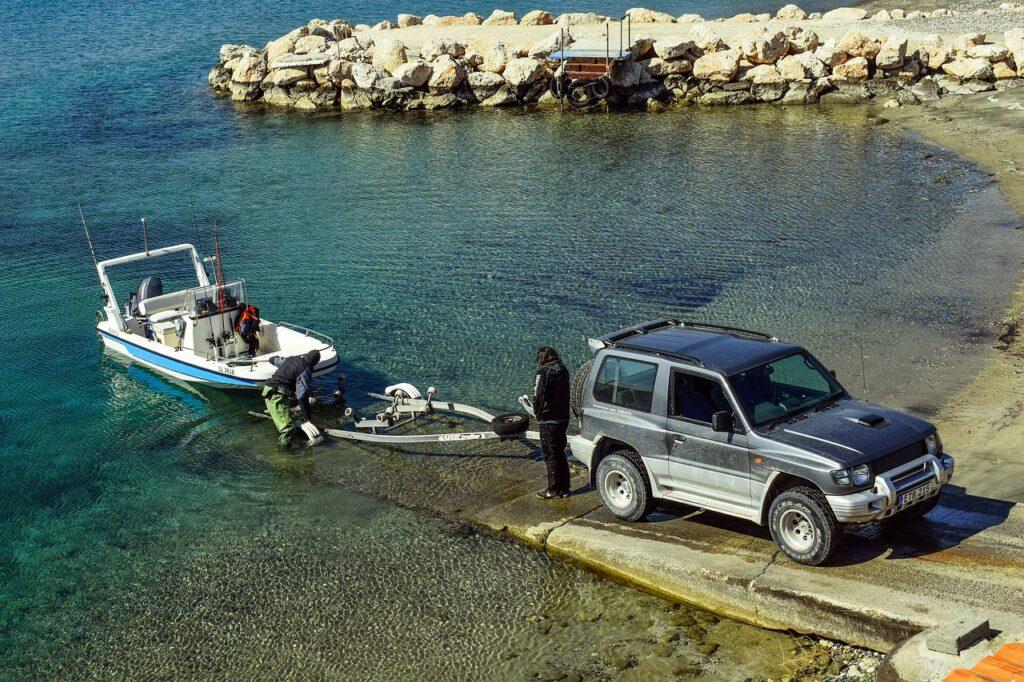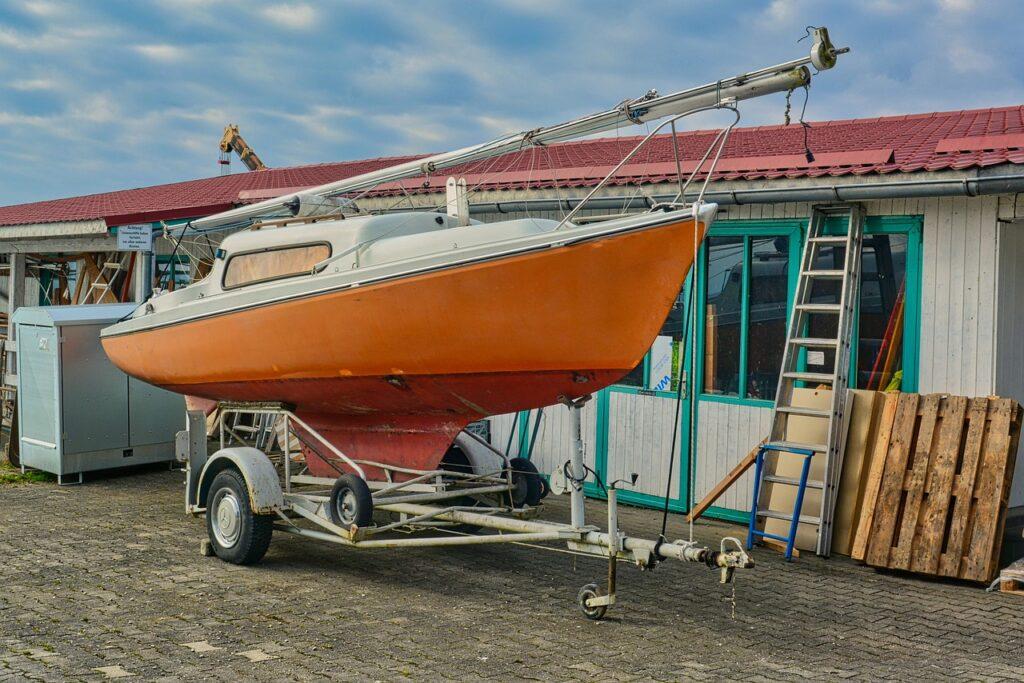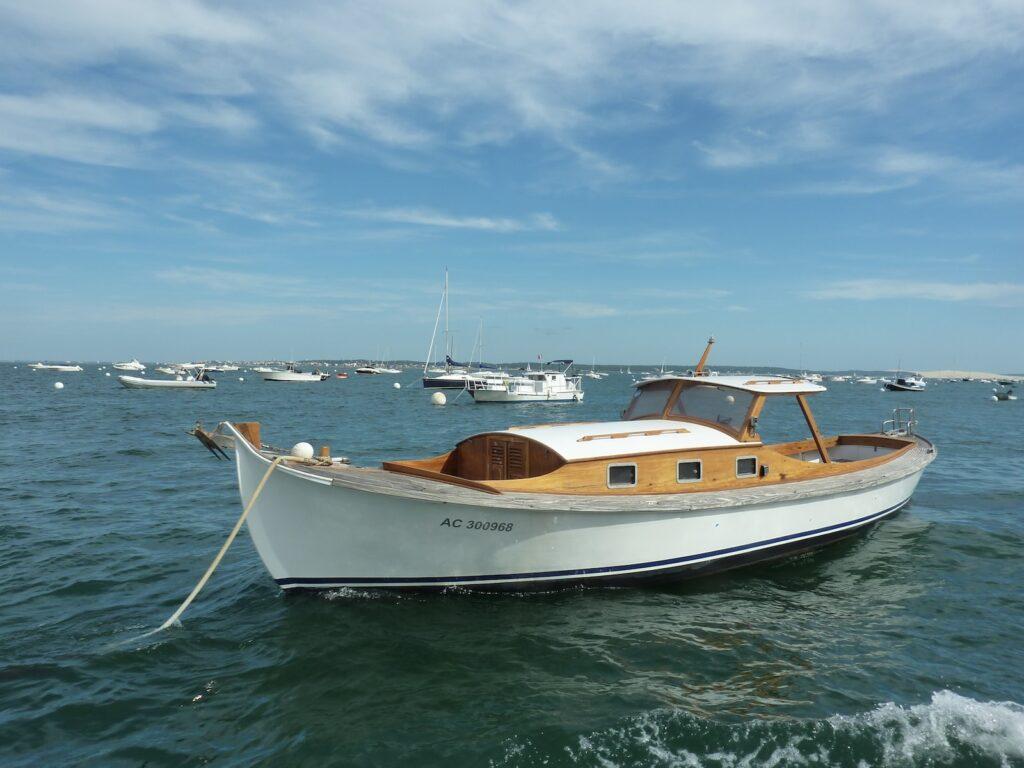How to Make a Boat Rooster Tail
Key Takeaways:
- Creating a rooster tail requires the right kind of boat with a powerful engine and a hull design conducive to generating significant wake. It’s also important to conduct this activity in open, calm waters, and at speeds usually ranging between 25–35 mph (40–56 km/h), depending on the boat and conditions.
- It’s essential to gradually increase your boat’s speed, adjust the trim for an optimal water displacement angle, and execute a sharp turn while maintaining control of the boat. It may take several trials and adjustments to perfect the rooster tail effect.
- Creating a rooster tail can be an exciting spectacle but it should never compromise safety. Always ensure all passengers are wearing life jackets, be aware of the surrounding environment and other water users, and follow all boating regulations. Avoid any maneuvers that could potentially be dangerous, like excessive speed or overly aggressive turns.
A boat rooster tail is a visually captivating phenomenon that adds a touch of excitement and spectacle to your boating experience. It occurs when a powerful boat propels through the water, creating a high-speed spray or plume of water that resembles the tail of a rooster.
We will explore the art of making a boat rooster tail, unraveling the techniques and factors that contribute to its creation. Whether you’re a boating enthusiast looking to impress your passengers or a thrill-seeker eager to master this exhilarating maneuver, we’ve got you covered.
How To Make A Boat Rooster Tail
Creating a boat rooster tail, also known as a roostertail, can add a thrilling visual effect to your boating experience. A rooster tail is formed when water is forcefully ejected from the back of a moving boat, resulting in a spectacular spray or plume.
Creating a boat rooster tail, also known as a spray or wake effect, can add excitement and visual appeal to your boating experience.
Here is a step-by-step guide on how to make a boat rooster tail:
- Choose the Right Boat: Rooster tails are typically created by high-speed boats with sufficient power and hull design to generate the necessary water displacement. Select a boat with a powerful engine and a hull that can create a significant wake.
- Find Open Water: Locate a safe and open area with calm water to avoid any hazards or obstacles. Ensure that there are no boating restrictions or speed limits in the chosen area.
- Increase Speed: Gradually accelerate the boat to gain speed. The ideal speed for creating a rooster tail varies depending on the boat, but generally, it is around 25–35 mph (40–56 km/h). Consult your boat’s manual or seek advice from experienced boaters for guidance specific to your vessel.
- Trim the Outboard Motor: Adjust the trim of your boat’s outboard motor or sterndrive to achieve the optimal angle for generating a rooster tail. Experiment with different trim settings to find the sweet spot that produces the desired effect.
- Make a Sharp Turn: Once you have reached the desired speed, initiate a sharp turn by smoothly turning the boat’s steering wheel. The sharp turn creates a sideways force on the hull, causing the water to be displaced and forming the rooster tail effect.
- Maintain Control: While executing the turn, ensure that you maintain control of the boat and keep it balanced. Avoid excessive speed or aggressive maneuvers that could compromise safety.
- Observe the Rooster Tail: As the boat completes the turn, observe the spray or wake effect created behind the boat. The rooster tail should be a plume of water shooting up into the air from the boat’s wake. The size and height of the rooster tail will depend on various factors, including the boat’s speed, trim, and hull design.
- Practice and Adjust: Achieving the perfect rooster tail may require practice and adjustments to your technique. Experiment with different speeds, turns, and trim settings to fine-tune the rooster tail effect.
Remember to always prioritize safety during this activity. Be mindful of other boaters, follow boating regulations, and maintain situational awareness at all times.
Check Youtube video we have found:
Remember, creating a rooster tail should be done in open water areas away from other boats, swimmers, or sensitive shoreline areas to avoid any unintended consequences.
What Does It Mean To Rooster Tail
To rooster tail is an expression used to describe the effect of water being kicked up behind a boat as it moves through the water. It is caused by the power of the engine and the design of the hull and can create a visible spray of water in the wake of the vessel.
The effect of rooster tailing can be seen as a large fan-like spray of water behind the boat that appears to resemble a rooster’s tail. This spray can often be quite large and is caused by the force of the boat pushing the water out of its way as it moves forward. Rooster tailing is often seen in boats that are travelling at high speeds. The larger the engine and the more powerful the boat, the bigger the rooster tail will be.

What Causes a Boat To Rooster Tail
A rooster tail is caused by a boat’s propeller creating an excessive wake. When the propeller pushes the water out of the back of the boat, it creates a wake that forms a plume of water behind the boat.
- Boat Selection: Choose a boat with a powerful engine capable of generating sufficient speed and water displacement. Boats with outboard motors or stern drives are often well-suited for creating rooster tails.
- Speed and Trim: Increase your boat’s speed gradually, allowing it to reach a speed where the water flow is sufficient to form a rooster tail. Experiment with different speeds to find the optimal balance for generating an impressive spray.
- Trim Adjustment: Adjust the trim of your boat’s engine or outdrive to optimize the water flow. Raising the trim angle can help direct more water towards the back of the boat, enhancing the rooster tail effect. However, be cautious and adhere to manufacturer guidelines to ensure safe operation.
- Weight Distribution: Proper weight distribution can influence the formation of a rooster tail. Positioning passengers or ballast towards the back of the boat can help increase the water displacement and create a more prominent rooster tail.
- Steady Course: Maintain a straight and steady course while creating the rooster tail. Avoid sudden maneuvers or sharp turns, as they can disrupt the water flow and affect the rooster tail’s consistency and size.
- Safety Precautions: While creating a rooster tail can be exciting, it’s crucial to prioritize safety. Ensure that all passengers are seated and wearing appropriate safety gear. Follow boating regulations, respect other vessels, and be mindful of the surrounding environment.
This is known as a rooster tail. The size of the rooster tail is determined by the power of the boat, the size of the propeller, and the shape of the hull.
Preparation
Before you start making your boat rooster tail, there are a few things that you should take into consideration.
Check Boat Propeller
The first step is to check the condition of the boat’s propeller. If the propeller is not in good condition, it may not be able to create the desired rooster tail. Make sure that the blades are not bent or damaged in any way and that the hub is not cracked or broken.
Check Boat Hull
The next step is to check the boat’s hull. Make sure that the boat is not leaking and that the hull is not damaged in any way. If there is any damage, it should be repaired before attempting to make a rooster tail.
Check Water Conditions
The water conditions should also be taken into consideration. If the water is too shallow, the boat may not be able to generate enough speed to create a rooster tail. Also, if the water is too rough, the rooster tail may not be visible. Always check control marker to have more insights.
Materials

Once you have taken all of these factors into consideration, you will need to gather the necessary materials to make a boat rooster tail.
Propeller
The most important material required is a propeller. The type of propeller you will need will depend on the size and type of boat you are using. Generally, a four-blade propeller is best for making a rooster tail.
Boat
You will also need a boat that is large enough to be able to generate enough speed to create a rooster tail. Make sure that the boat is in good condition and that it is free of any damage.
Fuel
You will need to have enough fuel on board to be able to generate enough power to create a rooster tail. The amount of fuel will depend on the size and type of boat you are using.
You will also need to have the necessary navigation equipment on board so that you can safely navigate the waters. This includes a GPS, a compass, and a depth sounder.
Instructions
Once you have gathered all of the necessary materials, you will need to follow a few simple instructions in order to make a boat rooster tail.
Start the Boat
The first step is to start the boat and get it up to the desired speed. Make sure that the boat is pointed in the direction you want to go and that the propeller is spinning in the correct direction.
Increase Speed
The next step is to increase the speed of the boat until it is going fast enough to create a rooster tail. Generally, a speed of around 30 mph is necessary to create a rooster tail. If You count speed differently You can check our guide on unit of speed for boats.
Adjust Direction
Once the boat is going fast enough, you can adjust the direction of the boat so that the rooster tail is pointed in the direction you want it to go.
Create Rooster Tail
The last step is to create the rooster tail. This is done by pushing the throttle to the maximum and making sure that the propeller is spinning in the correct direction. To do that You might want to read how to find maximum horsepower.
Safety Precautions

Making a boat rooster tail can be dangerous if not done correctly. Therefore, it is important to take the necessary safety precautions in order to ensure that you and your passengers remain safe.
Wear Life Jackets
It is essential that all passengers on board wear life jackets for their own safety. Life jackets should be worn at all times when making a boat rooster tail.
Stay Alert
It is also important to stay alert and aware of your surroundings at all times. Make sure that you are aware of any other boats or objects in the water and keep an eye out for any changes in the water conditions.
Avoid Excessive Speed
It is also important to avoid going too fast when making a boat rooster tail. Going too fast can put you and your passengers at risk and can also damage the boat.
Whats the best boat rooster tail device
The best boat rooster tail device is usually determined by the type of boat being used. The most effective devices are those specifically designed for the type of boat being used. Devices designed for pontoon boats are usually different than devices designed for speedboats. Devices with adjustable speeds and directions are often preferred, as this allows for more flexibility and control of the water flow.
Boat rooster tail kit
The best boat rooster tail kit will depend on your specific needs and preferences. The best rooster tail kit should include a mounting bracket, screws, and a propeller guard. It should also be made of durable materials and be designed to fit your boat’s engine size. Look for a kit that has been designed specifically for your boat model, as this will ensure the best performance.
FAQs
What type of boat is best for creating a rooster tail?
Boats with a powerful engine and a hull design that can generate a significant wake are ideal for creating a rooster tail. High-speed boats such as powerboats, jet boats, or performance boats are commonly used for this purpose.
Is there an ideal speed for creating a rooster tail?
The ideal speed for creating a rooster tail can vary depending on factors such as the boat’s design, engine power, and water conditions. Speeds between 25–35 mph (40–56 km/h) are commonly used, but it’s essential to consult your boat’s manual or seek advice from experienced boaters for specific speed recommendations.
How do I adjust the trim of my boat to create a rooster tail?
To adjust the trim of your boat, use the trim control feature on your outboard motor or sterndrive. Experiment with different trim settings to find the optimal angle that generates the desired rooster tail effect. Adjusting the trim allows you to control the boat’s pitch and optimize the water displacement for the rooster tail. Refer to your boat’s manual for specific instructions on how to adjust the trim for your particular model.
Conclusion
Making a boat rooster tail is a great way to add some extra excitement to your boating experience. With the right materials and the correct techniques, you can easily create a rooster tail for all to enjoy. Just make sure to take the necessary safety precautions and to stay alert at all times.
